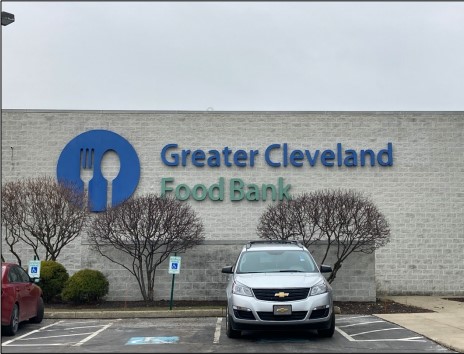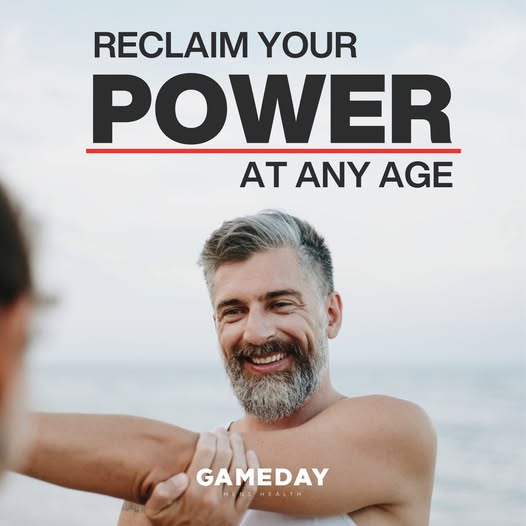Multiple organizations in the northeast Ohio area benefitted tremendously from the 2022 NBA All-Star Game in Cleveland on Feb. 20.
It was the third time the event was hosted in northeast Ohio. The last time it came to Cleveland was in 1997. The first NBA All-Star game in the area was at the Richfield Coliseum in 1981.
People from all over the world came to Cleveland this year to watch the game, putting lots of attention on the city itself.
Jennifer Brasdovich is the public relations manager at Destination Cleveland, a nonprofit visitors bureau determined to drive economic growth in the city. In an interview conducted by email, Brasdovich explained how the opportunities resulting from the game not only helped local businesses during the winter, but also gave Cleveland a chance to shine in front of a global audience.
“Hosting this event and welcoming tens to thousands of people to Cleveland gave us a rare opportunity to build on our community’s (coronavirus) pandemic recovery and improve Cleveland’s reputation on a national and global scale,” Brasdovich said. “Being able to host an event that drove visitation during the typically slower winter months provided a much-needed boost for our local hospitality businesses, many of which are still recovering from the effects of the pandemic.”
Another organization involved with the 2022 NBA All-Star Game was the Greater Cleveland Sports Commission. The organization was responsible for taking care of the factors that took place off the basketball court. That included managing road closures in the city and ensuring there was a strong security presence leading up to the game.
Meredith Painter is the director of marketing and communications at the Greater Cleveland Sports Commission. The commission is doing an economic impact study from the game and is still waiting for official numbers. Painter explained that the commission is estimating over $100 million in economic benefits for the community. She also emphasized how the work done in preparation for the game was crucial in keeping a smaller market like Cleveland on the map.
“These (are marquee) events that (a community is awarded) once every 20 years… We’re basically elevating Cleveland to a level that’s worldwide in terms of eyes on the city,” Painter said.
She also discussed the positive image that was reflected on the city with the game being broadcasted on television and highlighted on social media.
“There are glamour shots of our city. There are people seeing stuff on social media (and) sharing things about northeast Ohio, which is really great because it helps us (the Greater Cleveland Sports Commission) change perceptions of a mid-market city.”
The format of all-star game requires a captain for each team. In this year’s game, the team captains were LeBron James of the Los Angeles Lakers and Kevin Durant of the Brooklyn Nets. Each captain’s team is named after them. James’s team name was “Team LeBron” while Durant’s was “Team Durant.”
Once selected, each team captain also chooses a charity in the local area to represent during the game. James, who is a native of Akron, Ohio, chose to represent the I Promise Scholars program at Kent State University. James established the I Promise Program in 2011. Its goal was to foster underprivileged students of the Akron Public School District and provide them with the guidance they needed to graduate high school. In 2015, James founded the I Promise Scholarship. It guaranteed free tuition for four years to the University of Akron, as long as those students completed certain academic requirements. Kent State University became the second school to accept the scholarship in 2020.
Durant chose to support the Greater Cleveland Food Bank. Since 1979, the organization has supported numerous agencies in six different counties of northeast Ohio. It provided over 56 million pounds of food to more than 400,000 people in 2020, based on its annual report for that year.
Both the I Promise Scholars program and Greater Cleveland Food Bank each received $150,000 before the game even started. Additionally, whichever team won each of the first three quarters (by score) would have $100,000 donated to its respective charity. In the fourth quarter, both teams played to a specific “target score.” Whichever team made it to that score first would have an additional $150,000 donated to its charity. The NBA and State Farm also donated $1,900 for every assist made during the game and split the final amount between the I Promise Scholars program and the Greater Cleveland Food Bank.
Team LeBron defeated Team Durant 163-160. James’s team secured over $500,000 for the I Promise Scholars program at Kent State. Before receiving those donations, Kent State students in the program only had their first year of basic dorm and meal plan costs covered. The addition of those funds will now pay for those costs for four years.
Dr. Dana Lawless-Andric is the associate vice president for the Office of University Engagement and Outreach at Kent State University. She is the university’s direct liaison with the LeBron James Family Foundation and talked about how those additional funds came at the perfect time.
“One of the concerns we had (was) how (we would) support students after year one for housing. So we were already trying to figure out some creative ways to support students and help them,” Lawless-Andric said. “Meanwhile, this opportunity (to be represented in the allstar game) pops up, and it was almost like a blessing.”
With those funds, I Promise students at Kent State now have a wide-open range of academic opportunities to pursue. That is one of the core values Lawless-Andric and other Kent State faculty have strived to relay—no matter where their students are from.
“Our message (for) the students from the beginning (has) been (that) we’re invested in (them) fully. (They) bring so much value and experience and this is just an opportunity to build on that,” Lawless-Andric said. “Our students who come from higher income-need communities often times have different challenges than students who may come from more resourced backgrounds. So our other hope is to say ‘let us help shoulder that burden so (they) can focus on all the other things that (they) are here for.’”
Although Team Durant lost the game, the Greater Cleveland Food Bank walked away winners. The organization received over $300,000 in donations. Geoffrey Masten has been the director of development at the food bank since December 2020. When Kevin Durant chose to represent the Greater Cleveland Food Bank for the all-star game, it was Masten’s responsibility to work with contacts from the NBA and he discussed how the funds would be used within the food bank.
“The funds received from Team Durant are being directed to supporting general operating needs, which is our area of greatest need,” Masten said.
Prices for the food bank’s operating costs rose due to recent inflation across the United States. One of those costs is diesel truck fuel used to transport goods. Masten stated that the donations have played an impactful role in helping the Greater Cleveland Food Bank combat that problem.
“Inflation and increased prices are affecting everyone. And we’re no different,” Masten said. “Those funds have certainly had a positive impact … Those are funds that we need to help support our operations which support our community.”

received donations during the NBA All-Star game. Those donations will help
the food bank continue to serve thousands of people in six Northeast Ohio
counties. Courtesy of Darayus Sethna.
The city of Cleveland has been hit hard in terms of people suffering from food insecurity the last few years.
According to a 2021 study conducted by the Swetland Center for Environmental Health at Case Western Reserve University, the number of people affected by food insecurity in Cuyahoga County in 2018 was over 200 out of every 1,000 (of the municipal population) in areas closer to Cleveland. That is at least one in every five people. Those circumstances have increased the demand from the Greater Cleveland Food Bank, especially since the coronavirus pandemic began. In fact, the food bank provided 9 million additional pounds of food in 2020 than they did the previous year, based on its annual report for 2020.
The funds from Team Durant have assisted the Greater Cleveland Food Bank to continue helping the local community, even as it recovers from the pandemic’s effects.
“We’re still feeling the impact of COVID-19. We’re continuing to serve more people prior to the pandemic. These funds are helping to support those efforts to provide food to those in need,” Masten said.
With those funds, Masten says that the Greater Cleveland Food Bank and its partner organizations will ensure that people in need of food will be able to access it on a daily basis.
























